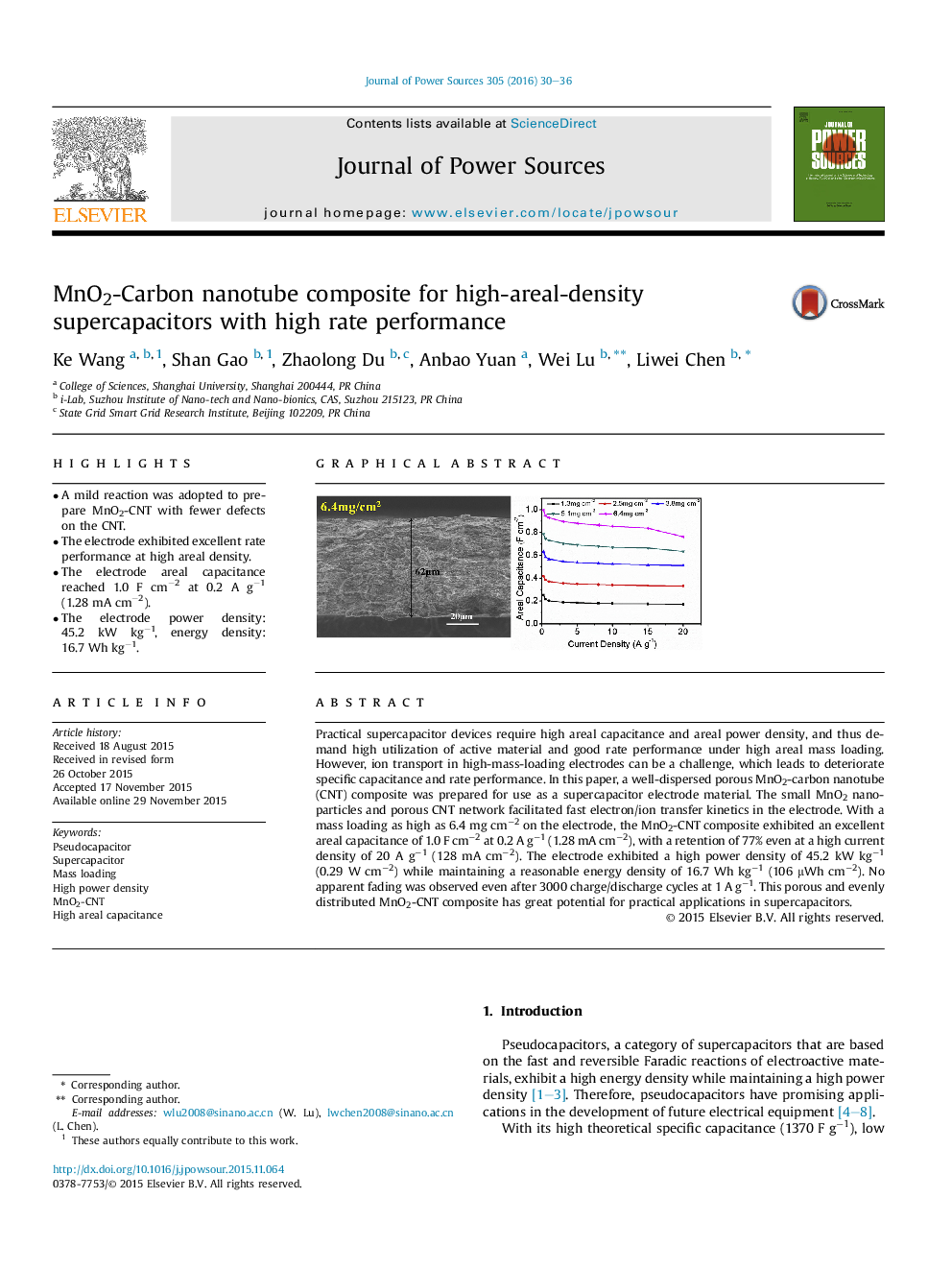| Article ID | Journal | Published Year | Pages | File Type |
|---|---|---|---|---|
| 1285539 | Journal of Power Sources | 2016 | 7 Pages |
•A mild reaction was adopted to prepare MnO2-CNT with fewer defects on the CNT.•The electrode exhibited excellent rate performance at high areal density.•The electrode areal capacitance reached 1.0 F cm−2 at 0.2 A g−1 (1.28 mA cm−2).•The electrode power density: 45.2 kW kg−1, energy density: 16.7 Wh kg−1.
Practical supercapacitor devices require high areal capacitance and areal power density, and thus demand high utilization of active material and good rate performance under high areal mass loading. However, ion transport in high-mass-loading electrodes can be a challenge, which leads to deteriorate specific capacitance and rate performance. In this paper, a well-dispersed porous MnO2-carbon nanotube (CNT) composite was prepared for use as a supercapacitor electrode material. The small MnO2 nanoparticles and porous CNT network facilitated fast electron/ion transfer kinetics in the electrode. With a mass loading as high as 6.4 mg cm−2 on the electrode, the MnO2-CNT composite exhibited an excellent areal capacitance of 1.0 F cm−2 at 0.2 A g−1 (1.28 mA cm−2), with a retention of 77% even at a high current density of 20 A g−1 (128 mA cm−2). The electrode exhibited a high power density of 45.2 kW kg−1 (0.29 W cm−2) while maintaining a reasonable energy density of 16.7 Wh kg−1 (106 μWh cm−2). No apparent fading was observed even after 3000 charge/discharge cycles at 1 A g−1. This porous and evenly distributed MnO2-CNT composite has great potential for practical applications in supercapacitors.
Graphical abstractFigure optionsDownload full-size imageDownload as PowerPoint slide
